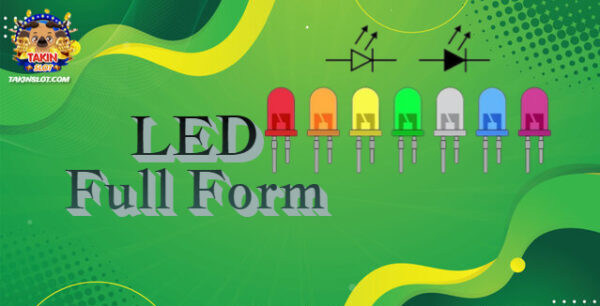LED Full Form: What does LED stand for? Understanding the Science and Operation of LEDs
LED Full Form: The term “LED” stands for Light-Emitting Diode, which has become the most widely used light source in contemporary times due to its energy efficiency and ability to emit a wide spectrum of colors. LEDs offer diverse lighting options suitable for various environments, including residential, commercial, and industrial settings. Let’s delve into the full meaning of LED and explore how it has revolutionized the concept of lighting.
What is the full form of LED?
The full form of LED refers to the light emitted by the diode after passing through it completely. This term signifies that the light produced is equivalent to the complete form but does not require the entire passage of light through the diode. LED operation involves two states: when the diode is open, it emits half-bright light, and when it is closed, it emits full-bright light. This semiconductor device functions as a p-n junction diode, with one end serving as the source and the other as the drain, allowing it to complete or interrupt circuits as needed.
The Science behind LEDs: LED Full Form
LED technology is garnering significant interest due to its energy-saving capabilities and unique properties. As a semiconductor light source, an LED (LED Full Form) emits bright white light, making it suitable for a wide range of applications. Its advantages include high brightness, long lifespan, compact size, and cost-effectiveness. LEDs offer customizable illumination across a broad color spectrum, ranging from blue to red, enabling the production of warm white, bright yellow, soft yellow, red, natural yellow, and colored white light. There are two main types of LEDs: those emitting yellowish light and those emitting white light.
LED Full Form: How do LEDs Work?
LEDs have the capacity to emit light in numerous colors and operate on a single-pass technology. They function under three primary lighting device types: white and red LEDs, blue LEDs, and T-bulb blue LEDs. White and red LEDs emit white light, making them suitable for indoor and outdoor lighting applications, while blue LEDs produce blue light ideal for outdoor use. These LEDs are employed in various settings, including indoor and outdoor lamps, floodlights, t-ball fields, parking lots, and camping lights.
Applications of LEDs in Modern-Day Life
LED lamps are highly efficient lighting devices characterized by low energy consumption and cost-effectiveness. They have replaced traditional light sources such as mercury lamps and halogen bulbs in ceiling lights, streetlights, and other fixtures, offering easy maintenance and a range of color options. LED displays have also become prevalent in modern technology, with manufacturers incorporating LED lighting into monitors and other devices for enhanced performance and energy efficiency.
Conclusion
LED (LED Full Form) technology offers numerous benefits, including energy efficiency, long lifespan, and versatility, making it an ideal choice for various lighting applications. Despite its advantages, selecting the right LED lamp or fixture requires careful consideration to ensure optimal performance and compatibility with specific needs. As technology continues to advance, LEDs are poised to become even more integral to our daily lives, representing the future of lighting solutions.
FAQs about LED Full Form
What is LED’s full form?
LED stands for Light-Emitting Diode. It’s a device made of semiconductor materials that emits light when electricity flows through it.
How do LEDs work?
LEDs operate based on the principle of electroluminescence, where light is produced as a result of the movement of electrons in a semiconductor material. When current flows across the semiconductor material in the LED, it causes electrons to move from a higher energy state to a lower one, emitting photons in the process, which creates light.
What are the advantages of using LEDs?
LEDs offer several advantages over traditional lighting sources. They are energy-efficient, have a longer lifespan, produce less heat, and offer greater flexibility in terms of color and design. Additionally, LEDs are more durable and environmentally friendly compared to incandescent and fluorescent bulbs.
Where are LEDs commonly used in modern-day life?
LEDs are widely used in various applications, including residential lighting (such as lamps and ceiling lights), commercial lighting (such as streetlights and signage), industrial lighting, automotive lighting, and electronic displays (such as TVs, computer monitors, and smartphones).
Are LEDs cost-effective compared to traditional lighting sources?
While LEDs may have a higher upfront cost compared to traditional lighting sources, they are more cost-effective in the long run due to their lower energy consumption and longer lifespan. LEDs require less maintenance and replacement, resulting in reduced operating costs over time. Additionally, advancements in LED technology continue to drive down costs, making them increasingly affordable for consumers and businesses alike.




